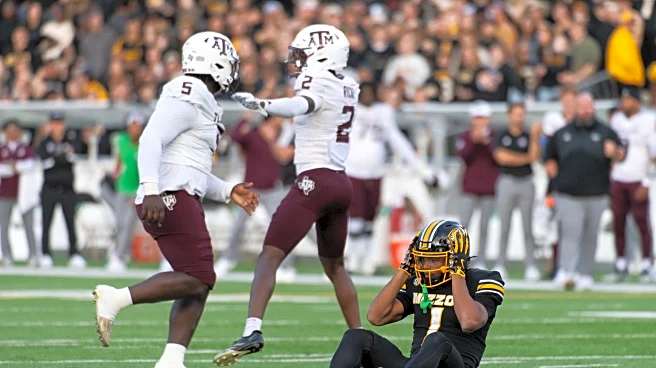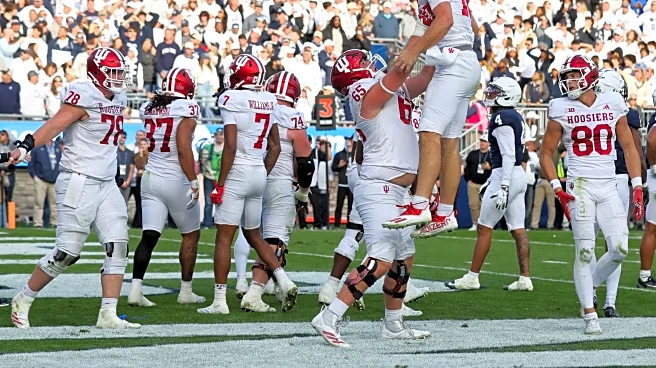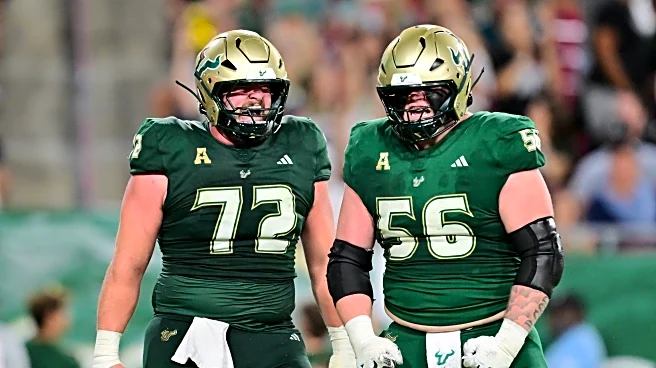What's Happening?
The class of 2027 quarterbacks is drawing significant attention as they prepare to join their respective college teams. ESPN highlights several top prospects, including Bryant, Johnson, Jarrard, Edmunds,
Taylor, and Lopati, each bringing unique skills to their future schools. Bryant, a dynamic dual-threat quarterback, is set to join Texas Tech, while Johnson, known for his size and arm strength, will head to Texas A&M. Jarrard, with high developmental upside, is committed to Notre Dame, and Edmunds, a strong pocket passer, will join Ohio State. Taylor and Lopati are expected to fit well into Nebraska and Illinois' offensive schemes, respectively.
Why It's Important?
The arrival of these quarterbacks is poised to impact college football significantly, as they bring diverse skill sets that could redefine team strategies and performance. Their development and integration into college programs could influence team rankings and playoff prospects. Schools like Texas Tech and Ohio State may leverage these quarterbacks to enhance their offensive capabilities, potentially altering the competitive landscape in college football. The recruitment of these players underscores the ongoing evolution of college football, where dynamic and versatile quarterbacks are increasingly valued.
What's Next?
As these quarterbacks transition to college football, their development will be closely monitored by coaches and analysts. Their performance could lead to strategic adjustments in team playbooks and influence recruiting trends. Schools will likely focus on nurturing these talents to maximize their potential, with some players possibly redshirting to refine their skills. The impact of these quarterbacks will unfold over the coming seasons, potentially affecting team success and player draft prospects.
Beyond the Headlines
The recruitment of these quarterbacks highlights broader trends in college football, such as the increasing emphasis on dual-threat capabilities and adaptability. This shift reflects changes in offensive strategies, where mobility and improvisation are becoming crucial. The focus on developing young talent also underscores the importance of long-term planning in college sports, as teams invest in players who can shape their future success.














